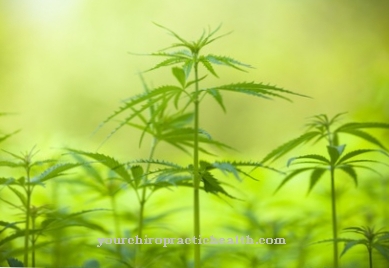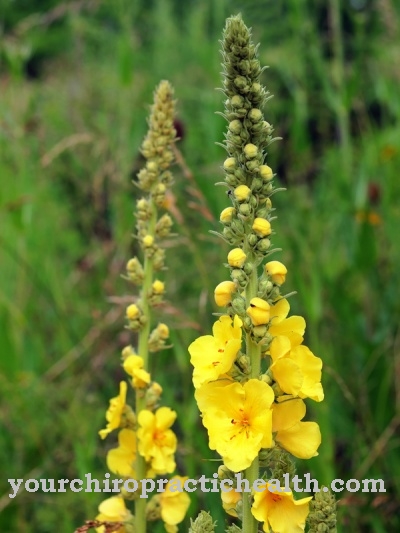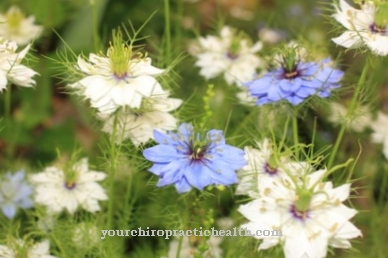Of the Loosestrife is a wild shrub found in our latitudes. In general, little is known about its importance as a medicinal plant.
Occurrence and cultivation of the loosestrife

Effect & application
There are many traditional references to the use of yellow loosestrife in healing arts. Yellow loosestrife, for example, contains vitamin C. He was able to help compensate for the vitamin deficiency that occurred earlier in winter. Herbalists still recommend preparing yellow loosestrife as a vegetable in spring to enrich the menu. To do this, the young shoots and leaves of the plant are boiled or steamed and braised before it begins to bloom.
In herbal medicine, the flowering herb is collected in order to make tea from it. Half a liter of water is poured over a tablespoon of the fresh or dried herb. After about three to five minutes of steeping, the tea is ready to use. Due to its hemostatic astringent effect, it is used externally to promote wound healing. In the case of hemorrhoids, a hip bath may be able to provide relief.
Treatment with loosestrife tea can also be indicated for couperose. Folk medicine has handed down the preparation of a wound pad from the freshly crushed herb. In the case of inflammation of the oral mucosa, the gums and bleeding gums, gargling with the tea is said to have a healing and hemostatic effect.
Internally, the tea or a preparation as a tincture (as an alcoholic extract) is used in phytotherapy for coughing, nervousness, insomnia and stomach and intestinal problems. In the case of diarrhea, loosestrife should also help to rebuild the disturbed intestinal flora. Homeopathy uses Lysimachia, for example, in the form of globules. In the case of diarrhea, these are usually globules of potencies D1 to D6.
Traditional Chinese medicine values preparations made from another species of loosestrife (Lysimachia christianae) for liver and gallbladder problems. The yellow dye from the flowers of the versatile plants can, together with alum, be used as a natural color for dyeing textiles made of wool and silk. The roots give a brown shade. In the past, the loosestrife was also used to tan leather because of its tannin content. And people used it to smoke out apartments. So they could drive away annoying insects.Importance for health, treatment & prevention
The range of applications mentioned above suggests that loosestrife must contain many substances that are important for health. They can be used not only for the treatment, but also, if necessary, for the prevention of health disorders. The vitamin C it contains, for example, is effective against scurvy and is needed to support the immune system.
The silica, which is also found in many other plants, helps keep the skin and connective tissue healthy and elastic. The saponins in loosestrife can bind fats and hinder the growth of harmful fungi. This is possibly one of the reasons for the positive effect in the gastrointestinal tract. Sesquiterpene lactones also seem to be present in relevant quantities. These bitter-tasting substances are produced by the plant to keep pests and parasites as well as predators away. It is believed that they can exert anti-inflammatory properties in humans.
The glycoside salicarin is a secondary plant substance. It shows an antibacterial effect in the intestine. In this way, it can support the herb's effectiveness against intestinal infections and diarrhea. The loosestrife Lysimachia vulgaris also contains other digestive mucilages and pectin. It is difficult to estimate how strong the health potencies of all of the above-mentioned active ingredients in yellow loosestrife are. The findings from folk medicine are based on individually made experiences and the transmission of traditional methods of application.
Pharmacological findings based on investigations with modern scientific methods can hardly be found in relation to this ancient medicinal plant. The most important therapeutically effective substances can be considered to be the various tannins. Most of the known fields of application for preparations made from yellow loosestrife, which relate to wound healing, are based on their properties. On the one hand, there is the astringent effect, which is responsible for the fact that bleeding can be stopped better. In addition, there is a supporting anti-inflammatory effect.



























